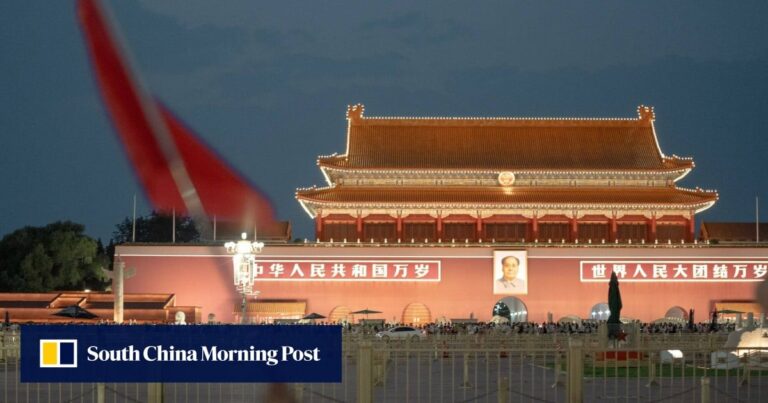The meeting, officially known as the Third Plenary Session of the 20th Central Committee, is also likely to release more details on a set of intermediate industrial and technological targets to be met by 2035, as well as a roadmap for achieving the goal of becoming a technological superpower with a world-class military by 2049.
The meeting is expected to conclude on Thursday with a short statement outlining the main decisions, and precedent is that a full party document outlining the decisions will be released in the days that follow.
But observers warned that the documents only provide general policy directions, often laced with party jargon, and that the full picture will only become clear once specific policy details and the country’s next five-year plan are released in the coming months.
There will also be keen interest in clues as to the fate of Qin Gang, who was abruptly dismissed as foreign minister last year, and the announcement that Li Shangfu’s successor, Dong Jun, has been appointed to the Central Military Commission.
State news agency Xinhua has been setting the tone for the rally with a series of articles extolling the achievements of the past decade, followed by another on “inspirational” lessons to be drawn from the past decade of Xi Jinping’s rule.
Meanwhile, security agencies have been urged to “make every effort to safeguard national security and social stability” in the run-up to the event, with top party official Chen Wenqing stressing that the event coincides with the 75th anniversary of the founding of the People’s Republic of China this year.
Neil Thomas, a Chinese politics researcher at the Asia Society Policy Institute’s China Analysis Center, said Xi will use the meeting to promote existing policies that focus on party control, technological self-reliance, financial de-risking, social welfare and supply-side industrial policy.

“But the political agenda of economic pessimism could lead to a very modest ‘positive surprise.’ The most interesting emerging signal ahead of the meeting is that more pro-business policies may be implemented in the high-tech sector, but President Xi does not want to unleash entrepreneurs and markets, but rather harness them to develop technology and revitalize manufacturing,” he said.
“Positive but non-transformative signs would include increasing central government borrowing to support local public services, helping local governments earn and retain more revenue, cracking down on local protectionism, relaxing the household registration system, reducing the negative list for foreign investment, and reforms to data markets, rural land rights, and state-owned enterprises,” he said. [state-owned enterprises] “Governance”
A mainland-based political analyst, speaking on condition of anonymity, said the event would serve as a blueprint for the next five-year plan for 2026 to 2030.
“If the Party’s language is [in the documents published after the plenum] “It’s too difficult to comprehend. We have to wait for the next government work report in March and the next five-year plan, when the major key policies will be laid out. We should wait until then to see if there is anything to celebrate,” he said.


